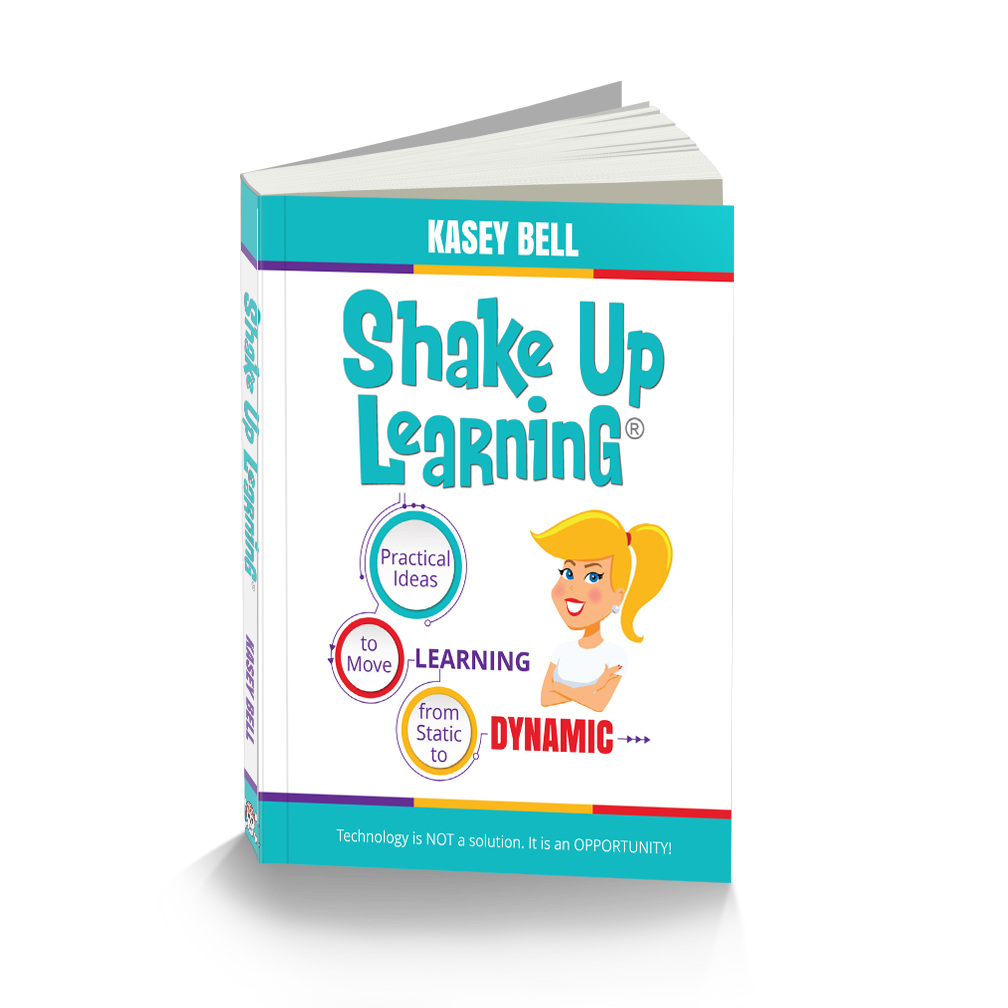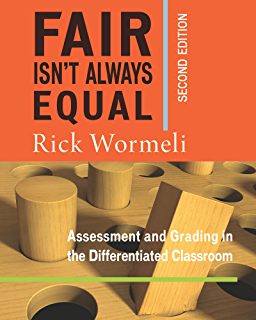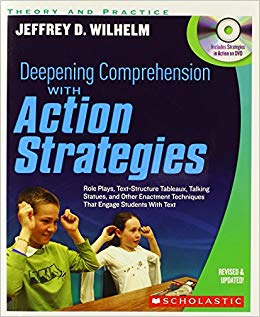So many books, so little time. This is my mantra. It is very rare for me to read a book more than once unless of course, I’m using that book in class and then it’s likely I’ve read it 10 times. When it comes to professional books with teaching ideas and strategies I generally rely on my sticky notes or marginal notes to help me use what I’ve read.
Then there are those professional books that are worth reading over and over again. Sometimes it’s necessary to read cover to cover all over again. Maybe it’s been a few years since reading it for the first time or maybe it was something you used for a while but a new initiative took you a different direction and now you want to go back.
Taking on a new position in a new district with a new grade level has me reading and learning like I’m back in grad school. Revisited some of my most beloved professional books not only reminds me of the great ideas I once used but also reignites my teaching passion.
Here are a few professional books that I continue to go back to over and over again. Even when I’ve read and highlighted the heck out of them, there is still something that sparks an idea or reminds me of something I used to do that I should bring back or sometimes I read something new I didn’t remember noticing before.
Some of the links in this post are affiliate links. Thank you for supporting our website.
Shake Up Learning by Kasey Bell
About the time Kasey published this book I had stumbled upon her website. So I was consuming everything she was writing and sharing as quickly as I could. When she asked for readers to join her book launch team I was all in.
Being a part of this team forced me to devour the book quickly. The book shared a whole new concept of teaching that I had not fully considered. Teachers always talk about engaging their students. It’s become a buzz word. However, Kasey’s concept of the 4 C’s and creating dynamic learning experiences was about more than adding engagement, it was about making bigger changes. I’ve been in education long enough to see major change take place. With the addition of technology and the change in how students are engaging with their learning, it’s important for teachers to change as well.
YES! Change is inevitable. We can either let it break us or we can learn to find ways to turn it into an advantage. We’ve all probably heard this before, maybe from our administration, and been made to feel like we have to change the way we do things in our classroom tomorrow. However, this is not Kasey’s approach to adapting lessons in our classrooms.
At the end of each chapter in Shake Up Learning, Kasey very clearly lays out action steps to help us make effective change. This provides teachers with a plan of attack for accomplishing the transformation and designing lessons that our students need.
I remember attending a technology conference in the first few years of teaching and the lead speaker said that 80% of our students are in school training for a job that doesn’t exist yet. Now I have no idea if that percentage is currently accurate, but I can’t imagine in a decade this has decreased. Either way, this idea has stuck with me and encouraged me to create the kind of lessons Kasey describes in her book.
The second part of this book goes into detail about the attributes of a dynamic lesson. She digs into her four C’s that help design a dynamic lesson or unit. The four C’s are creativity, communication, collaboration, and critical thinking. Kasey recently talked through an even deeper dive into these components on her podcast. This is what prompted me to pick up the book again.
If this sounds like something you might want to dive into for yourself I would suggest joining her next book study and taking a look at the online, self-paced course she offers. A few times a year she offers this collaborative group online book study. You can learn more here for the most recent details.
Fair Isn’t Always Equal by Rick Wormeli
My first introduction to Rick Wormeli was through a book study with Meet Me In the Middle. A small group of colleagues met once a week to discuss and share how we were able to incorporate the ideas and examples provided in this book. A few years later I had the opportunity to take an online graduate course where the focus was Wormeli’s other book Fair Isn’t Always Equal. This was my first introduction to the idea of standards-based grading.
Because the course was online I didn’t feel I could properly process and implement the information being presented in this book. The idea of eliminating grades, or at least moving towards that direction in some way, is pretty mind-blowing for educators. But not just for teachers, students and parents are not familiar with the idea of standards-based grades either.
This mindset shift makes so much sense for what education should be all about. For most of us we’ve been so indoctrinated with the traditional methods of school it’s difficult to imagine how this could actually work. Especially when considering the time commitment. This had been my struggle when I was first wrestling with this new way of teaching.
After hearing Rick Wormeli break it all down in a two-day seminar, I now have a very different outlook. Turning your classroom into a standards-based model is not something you do overnight, or a long weekend even. Wormeli advised me to take 5 things I want to change for the second half of this year and work to make those happen. Then at the start of next school year, I can structure my courses with a few more. Along the way making adjustments and transitions as they arise. Overall the process could take 2-3 years to make a complete transition.
The latest edition of Fair Isn’t Always Equal has new updates which is why I’ve started from the beginning and will work my way all the way through. My hope is, to begin with, a plan for transition and establish some key concepts that I’m able to implement in my courses for the next school year. You can watch my journey as I chronicle all my moves on Instagram.
Deepening Comprehension with Action Strategies by Jeffery Wilhelm
In the last few years, I’ve been hearing a lot more boys openly sharing their disdain for all things reading books. Well, let’s be honest, reading in general. There have been a few girls who chime in, but I sense the girls are really just being more polite and keep it to themselves. I’m always trying to be conscious of adding movement to lessons and working to provide more choices to allow students more ownership of their learning.
What I have noticed is that those things are not enough. Kids are more responsive to lessons that allow them to experience their learning. For example, before we started reading A Long Walk to Water we had students carry buckets of rocks that weighed the same as a bucket of water. We had them carry the buckets down the hall and up a set of stairs. Then when we read an article about a girl who carried jerry cans of water every day for miles the kids could relate on some level with this concept.
The action strategies that Jeffery Wilhelm shares in his book are a great way to give kids more of an experience with their learning. I have used them in the past, but somewhere along the way, they fell out of my plan book and off my radar.
Wilhelm now has an updated edition of this book (the title listed is the new one) that also includes a DVD of lessons on video. With our Shakespeare unit quickly approaching I’m on the lookout for more physical learning opportunities that will get my students out of their seats.
With all the information provided for us online, we sometimes forget that our cabinets and bookshelves may already have the solutions we seek. What teaching gems could you literally dust off and add back into your teaching repertoire? Share your favorite professional books in the comments or share a photo of the book on Instagram and tag me. I can’t wait to see what you are reading again.










Yes! I have read 2 of the 3 and TOTALLY agree. Thanks for reminding me that revisiting some of those ‘old’ books is worth it!
Especially when the authors have added and updated the content. Sometimes it takes several readings to really grasp involved concepts. I’m glad you found this encouraging.